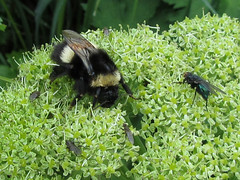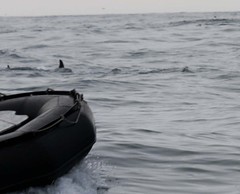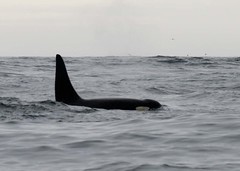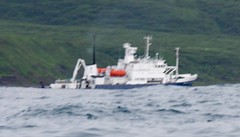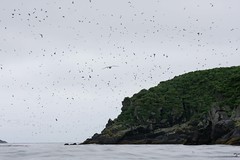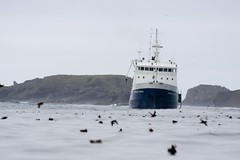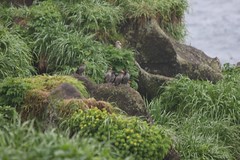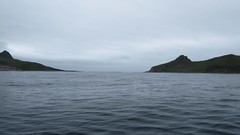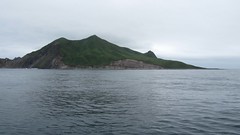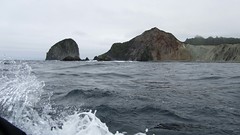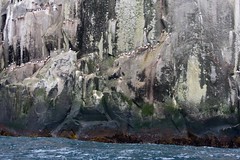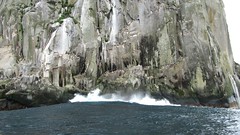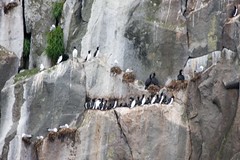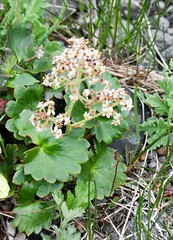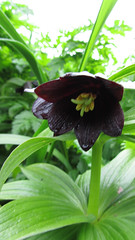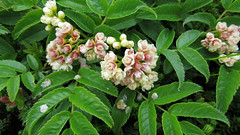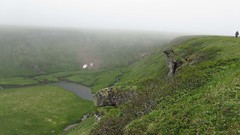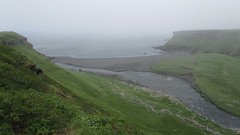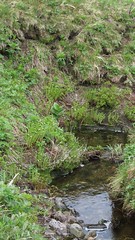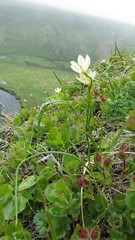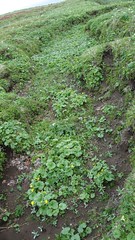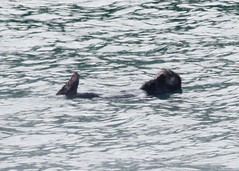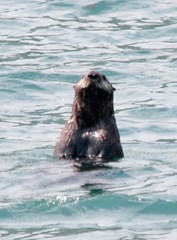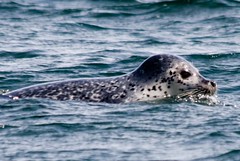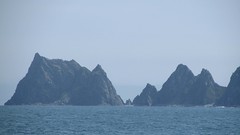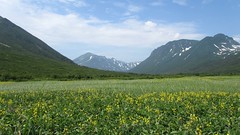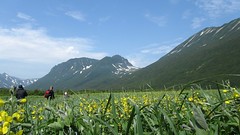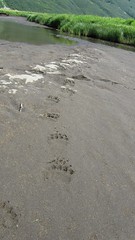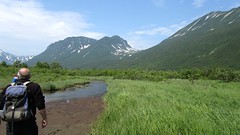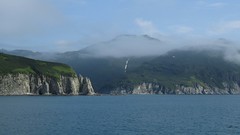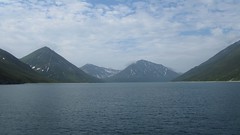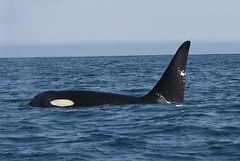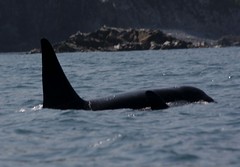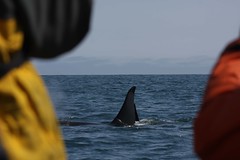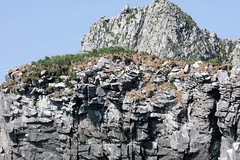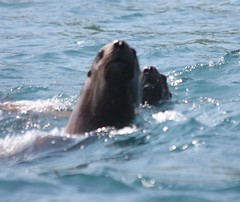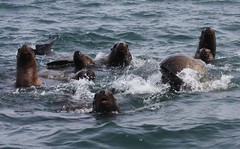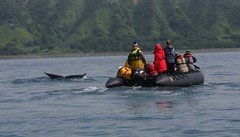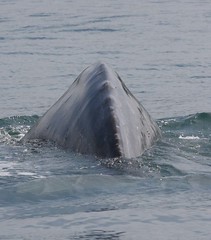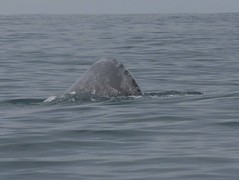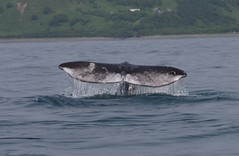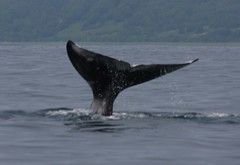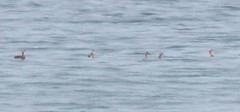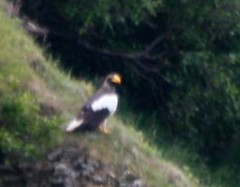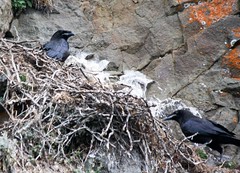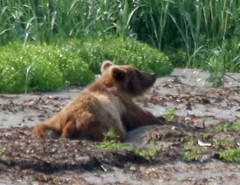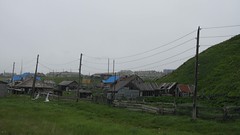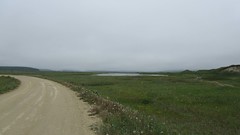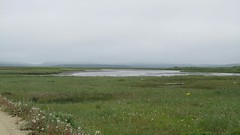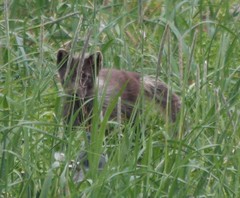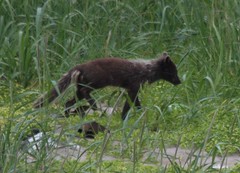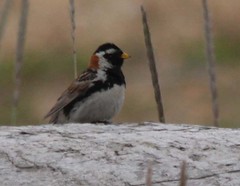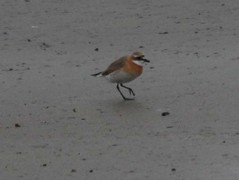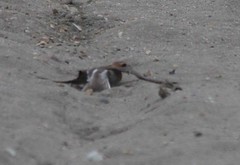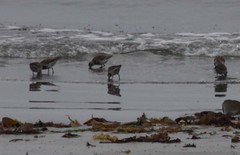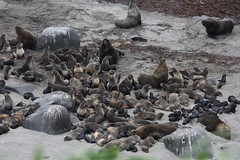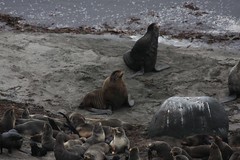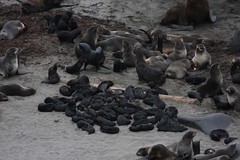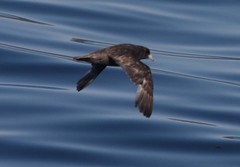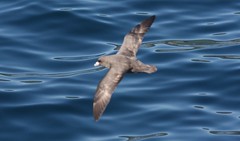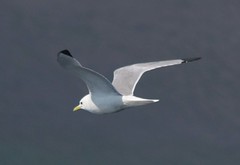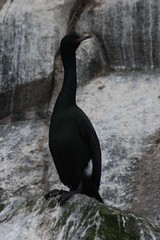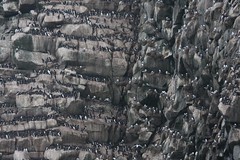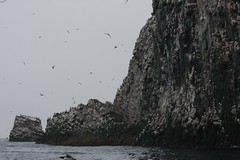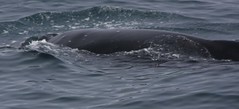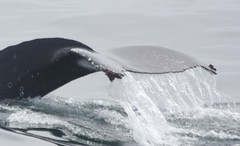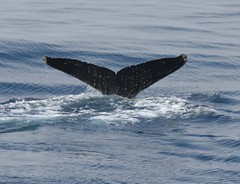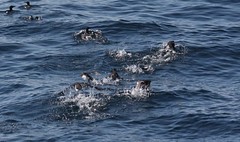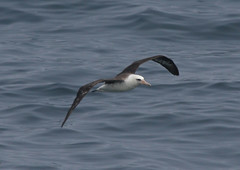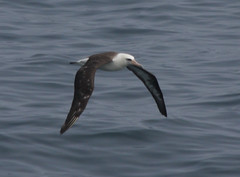|
The Cruise on the Spirit of Enderby 5th to 14th of July 2010
Trip notes and photographs. The notes are brief with some photographs of the trip but the main wild life photographs are on other pages and you will need to follow the following links.
Flowers of the Russian far East
First trip was with The Lost World www.travelkamchatka.com The cruise was with Heritage Expeditions www.heritage-expeditions.com
|
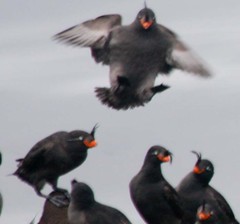
|
July 5th
We set sail in the afternoon from Petropavlovsk travelling down the east coast of the Kamchatka Peninsula. The weather quickly deteriorates as we are on the fringe of a bad storm. Only a third of the passengers manage to arrive for Dinner and most go to their beds early.
 Brunnich's
Guillemot
Brunnich's
Guillemot
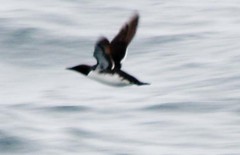 Brunnich's
Guillemot
Brunnich's
Guillemot
 Slatty-backed
Gull
Slatty-backed
Gull
 Sperm Whale
Sperm Whale
 Laysan
Albatross
Laysan
Albatross
 Laysan
Albatross
Laysan
Albatross
 Northern
Fulmar
Northern
Fulmar
 Red-faced
Cormorant
Red-faced
Cormorant
July 6th
After a very rough night we wake to see the coast of Paramushir Island. It is too rough to land and so we travel south through the Kuril Islands to try to avoid too much of the rough seas. The day is spent resting after a bad night and attending lectures about the wild life and people of the region.
 Slaty-backed
Gull
Slaty-backed
Gull
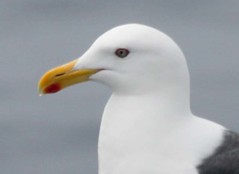 Slaty-backed Gull
Slaty-backed Gull
July 7th
Wake up it is 6.15 am! The ship is rolling heavily in the swell near Matua Island. After our breakfast and briefing we get into the zodiacs and immediately Adam spots some Orcas so we travel off shore to get a good view. Returning we land on Toporkovyy Island. Northern Fulmars, Tufted Puffins and Crested Auklets all nest in large numbers on the island. Once ashore we scramble across the slippery rocks and up onto the island. We make a short climb and then have to cross numerous trenches dug by the Japanese during the war. The Pigeon Guillemots and Slaty-backed Gulls also nest here and are very vocal with some dive bombing by the gulls if we get too near their nests. There are good opportunities to see the birds on their nests and to appreciate the many wild flowers to be seen. After four hours ashore we manage , with some difficulty, to board the ship once more and to sail for Yankicha Island.
Orcas

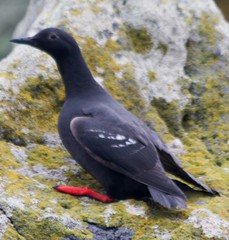 Pigeon
Guillemot
Pigeon
Guillemot
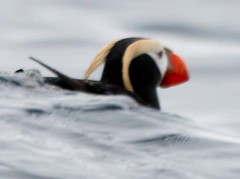 Tufted Puffin
Tufted Puffin
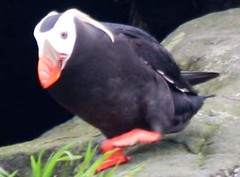 Tufted
Puffin
Tufted
Puffin
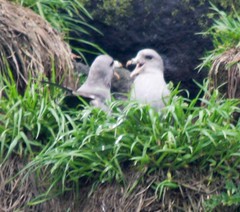 Northern Fulmar
Northern Fulmar
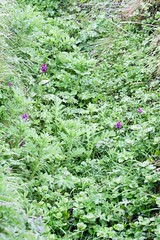 Japanese War Trench
Japanese War Trench
We arrive at Yankicha Island in better weather but by the time the zodiacs are in the water the swell and tides make loading them difficult. The aim was to enter the caldera but the big swell and low tide means crossing the bar is too dangerous. So we drive (in the zodiacs!) to the other side of the island where thousands of Crested and Whiskered Auklets assemble before roosting. This is an amazing spectacle and we sit in the zodiacs and watch them and some Fork-tailed Storm Petrels skim the surface of the sea. On the rock ledges there are Brunnich's Guillemots and Black-legged Kittiwakes nesting with several Northern Fur Seals swimming amongst the kelp. By this time as dusk approaches and we are becoming chilled we return to the ship for some warmth and good food.
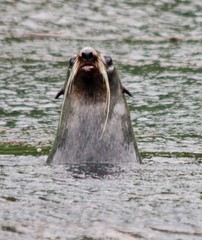 Northern Fur Seal
Northern Fur Seal
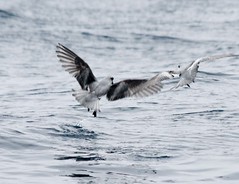
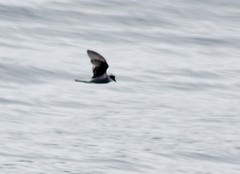 Fork-tailed Storm Petrels
Fork-tailed Storm Petrels
July 8th
Another early wake-up as we prepare to land on Simushir Island, our most southerly island of the Kurils. We land in Broutonia Bay where the Russians had a military base but which is now deserted. Some of the group are very interested in the old buildings whilst others search for the wildlife. We see the Pine-grosbeak, Grey-bellied Bullfinch, Arctic Warbler, Middendorff's Warbler, Spotted Nutcracker amongst others. There were also many wild flowers some of which could not be identified.

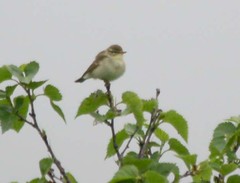 Arctic Warbler
Arctic Warbler
 Grey-bellied Bullfinch
Grey-bellied Bullfinch
We return to the ship and start our journey north passing the island of Ketoy with it's volcano. As we sail past Ostrov Raykoke we are surrounded by thousands of Northern Fulmars with Dahl's Porpoise playing in the bow wave whilst a Steller's Sea Lion Colony is seen on the shore.
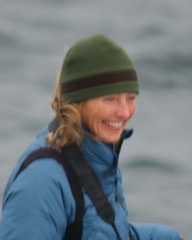 Louise
Louise
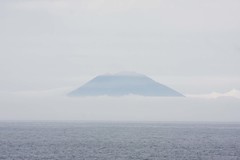 Ostrov Raykoke
Ostrov Raykoke
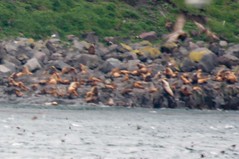 Steller's Sealions
Steller's Sealions

 Northern Fulmars
Northern Fulmars
July 9th
To-day we arrive at Onekotan Island and land in Nemo Bay. This is our first opportunity for a long walk and we set off through the multitude of flowers to Black Lake in good weather. The island is covered in Siberian Stone Pine and Dwarf Birch. The trees only reach a height of about one metre and around them grow many wildflowers such as Narcissus Anemone, Goldish Rhododendron and the orchid Keyflower.
 Dwarf
Birch
Dwarf
Birch
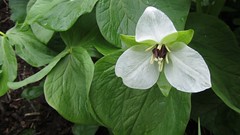 Kamchatka
Trillium
Kamchatka
Trillium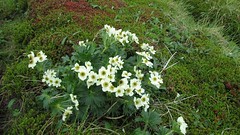 Narcissus
Anenome
Narcissus
Anenome
 Keyflower
Keyflower
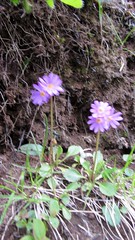 Wedgeleaf Primrose
Wedgeleaf Primrose
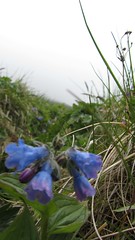 Weaselsnout
Weaselsnout
July 10th
This morning we arrive at Bukhta Russkaya. It is a beautiful morning and after an hours wait while the border guards give us permission to land we land on the beach and go in hunt for Bears. We find only fresh foot prints. There are fields of Yellow Lupine-like Goldenbanner a few birds but no bears.
We return to the ship for lunch on the fore deck while we motor slowly down the fiord. After lunch we board the zodiacs once more and travel along the coast. Immediately we spot a pod of Orcas and our patience is rewarded by some excellent sightings. Further along the coast we find Steller's sea lions hauled out on the rocks while some of the young males play around the zodiacs. Steller's Sea Eagles are seen nesting on the cliff tops. We then depart for Olga Bay further north along the coast near the Valley of the Geysers.
July 11th
By 0700 we are in the zodiacs are looking at Grey Whales foraging in the shallows of Olga Bay. After getting some good photos we land and start our walk along the beach. The view from the beach of the Kronotzky Volcano (3528m)is stunning. Soon we spot a Red Fox feeding on a dead sea otter. There are sea birds off shore, waders and Ravens nesting in the cliffs but then we spot A BEAR! The Kamchatkan subspecies of brown bear is the second largest in the world. It is sleeping on the beach until it sees us, then it finally decides it had better move and climbs up a gulley out of sight. Further along the beach is a lone Kamchatka reindeer. We return to the ship after looking at Largha seals and more Grey Whales. Is it really six hours since we left the ship? Yes our stomachs reply!

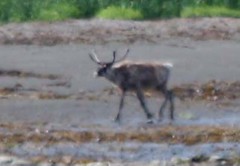 Kamchatka Reindeer
Kamchatka Reindeer
 Red-breasted merganser
Red-breasted merganser
 Melanie
Melanie
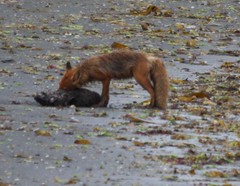 Red
Fox
Red
Fox
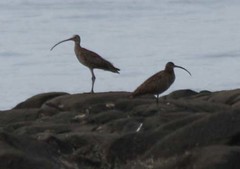
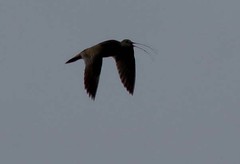 Far-eastern Curlew
Far-eastern Curlew
Then we set sail across the ocean to the Commander Islands.
July 12th
We arrive in the morning off shore from the small and only town on the Commander Islands: Nikolskye on Bering Island. As we walk to the Museum there are hundreds of Rock Sandpipers feeding along the shore. The museum naturally has as its focus the life of Commander Bering. There is also the skeleton of the extinct Steller's Sea Cow, named after Bering's naturalist Steller. During our free time some visit the studio of a local artist while others wander in search of birds and animals. I managed to find an arctic fox and some Mongolian Plovers one of which insisted on providing me with the 'broken wing syndrome' to lure me away from her young.
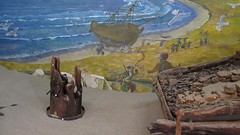 Museum
Museum
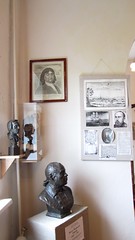 Bering
Bering
 Steller's Sea Cow
Steller's Sea Cow
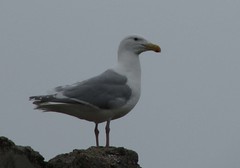 Glaucous-winged Gull
Glaucous-winged Gull
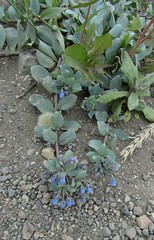 Weaselsnout
Weaselsnout
After lunch back on board we sail to the north cape of the island to visit a Northern Fur Seal Colony. Walking to the view point we pass many new and interesting plants. There are about 1500 males, 5000 females and many young pups. It is fascinating watching them as there are many confrontations between the large males as the compete to mate with the females. Soon it is time to return to the zodiacs and to speed across the bay to Ariy Kamen a small rocky off shore Island. The crossing is very choppy but with some excellent navigation we arrive to find the rocky ledges covered with thousands of breeding birds. On the narrow ledges are Black-legged and Red-legged Kittiwakes while the Common Guillemots use the wider ledges with some Red-faced Cormorants. On the grassy cliff tops there are Tufted Puffins and a few Crested Auklets. In some of the rock crevices there were a few Horned Puffins.
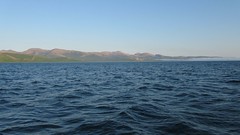
 Aliaria petiolata
Aliaria petiolata
 White False Hellebore
White False Hellebore
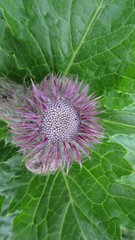 Kamchatka Thistle
Kamchatka Thistle
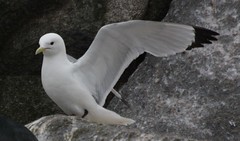 Black-legged Kittiwake
Black-legged Kittiwake
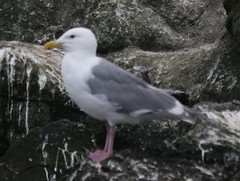
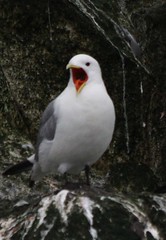 Glaucous-winged Gull
Glaucous-winged Gull
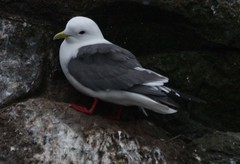
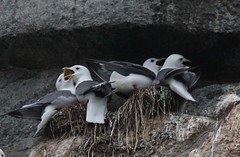
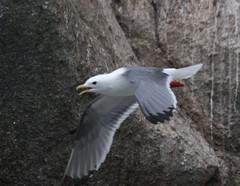 Red-legged Kittiwake
Red-legged Kittiwake
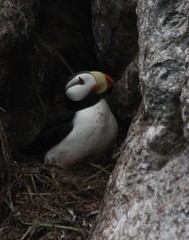 Horned Puffin
Horned Puffin
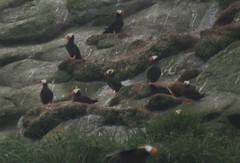 Tufted Puffin
Tufted Puffin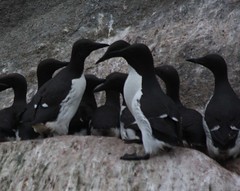 Common Guillemot
Common Guillemot
July 13th
During the night we sail around to the south eastern side of Bering Island and land the zodiacs in Commander Bay. On the hillside covered in wild flowers are the graves of some of the men from the Bering Expedition including that of Vitus Bering. It is a beautiful location with some lovely insectivorous plants called Yatabe Lady's Slipper.
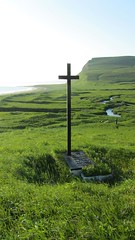 Bering's Grave
Bering's Grave
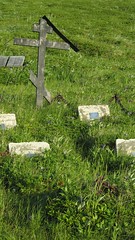 Crew graves
Crew graves
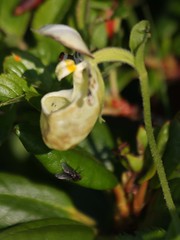
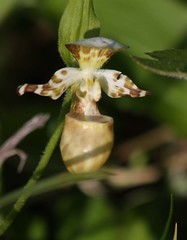 Yatabe Lady's Slipper
Yatabe Lady's Slipper
We set sail once more and on our way back to Kamchatka we are fortunate to come across a a large number of Humpback Whales.
July 14th
We arrive back to the Kamchatka coast off the Zhubanova River estuary where the ship is rolling heavily. We wait hoping to be able to have a zodiac cruise up the river but the weather deteriorates further as the waves are bigger and it is becoming foggy and our excursion is called off. So we have to be content with attending some more excellent lectures given by some of the crew.
July 15th
Sadly it is time to say our goodbyes to the friends we have made amongst the crew and passengers and make our way to the airport to sit and wait for our flights.
More photos may be seen by going to one of the links below.
These other pages are not completed unless coloured blue.
First trip was with The Lost World www.travelkamchatka.com
The cruise was with Heritage Expeditions www.heritage-expeditions.com
